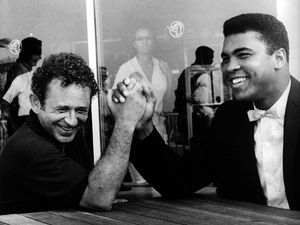Teaching Norman Mailer
This post is the first post in a series that discusses the “legacy power” of Norman Mailer, the challenge of carrying this legacy to the college classroom, how I radically changed my pedagogy to teach “Norman Mailer’s ‘America’” to college undergraduates, and what I learned from the experience.

At last year’s Conference of the Norman Mailer Society, Phil Sipiora discussed what he called the “challenge of legacy.” He argued that the work of Norman Mailer, like that of Hemingway and Fitzgerald, has “legacy power”: i.e., it deserves to be passed on through the work of academics and enthusiasts, and we literati have a responsibility to maintain that legacy in our various capacities. Norman Mailer’s presence may still be felt in the culture and history of the United States today, even if his work is not literally read. He helped write the culture of the twentieth century and thus helped to shape the identity of a nation. Mailer’s legacy lives on in the currents of history and culture, and we must endeavor to preserve and perpetuate its flow.
Sipiora’s call to action resonated with another shift gaining momentum in the academy. Like most academic disciplines, the humanities is being influenced by the increasing availability and use of networked digital technologies. This new media landscape not only repositions our relationships with old media forms, but encourages us to think about them in new ways. Nascent disciplines like Digital Humanities consider both the importance of textual preservation and the shifting attitudes and practices in our relationships to these texts. The Digital Humanities borrows from the disciplines of new media and the traditions of the liberal arts to foster communities based on affinity, accessibility, and collaboration.
While the implications for digital media on Mailer studies are many, the academy’s traditional realms of influence – scholarship, teaching, and service – are where I most see the continuity of Mailer’s legacy. My emphasis here will be on Mailer in the college classroom; specifically, a classroom in the cloud that blends traditional face-to-face with e-learning: approaches with exploratory, differentiated learning based on student interests and networked data. In this approach, students use mobile digital devices to communicate, explore, and self-organize their discovery of Mailer.
